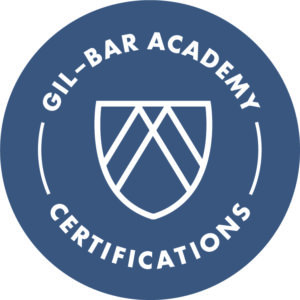Gil-Bar Launches Gil-Bar Academy to Offer Convenient, Industry-Leading Training Standards for All HVAC Professionals
New York — August 6, 2021 — Gil-Bar is pleased to announce the launch of Gil-Bar Academy, a continuing development program designed for HVAC industry professionals. A diverse array of courses are being offered on the topics of energy-efficiency, indoor air quality, local code requirements for energy systems, commissioning and PDH credits. Gil-Bar Academy is being established to elevate the knowledge base of HVAC professionals and ensure engineering teams are prepared for coming energy-efficiency changes and new technologies.

Courses will be available in both virtual and in-person formats, with a seamless registration process meant to maximize convenience for the industry’s busy professionals. Coursework will include best practices and technical specifications across a diverse array of the industry’s leading hardware manufacturers, including Armstrong, AAON, Cooney, Dectron, Hitachi, Konvekta, Nortek, TCF and TSI.
“The Gil-Bar Academy is our way of sharing what we’ve learned in this industry over the past 35 years, while engaging new talent and keeping established professionals sharp,” said Chris Bisaccia, partner at Gil-Bar. “Staying informed and well-educated in the competitive and changing HVAC industry has never been more crucial as local laws bring on rapid change and new systems are produced annually.”
“With the proliferation of highly efficient HVAC systems and local codes that change from state to state across the East Coast, it can be difficult for even the most seasoned HVAC engineers to keep up with the knowledge base that enables them to give the best guidance to clients,” said Alan Stefanac, an engineering executive at Gil-Bar who is helping to build the academy. “HVAC careers should also be attractive to younger talent as offering a specialized field with great earning potential. We want to share this passion for HVAC with the new generation.”
In the New York Metro Area alone, demand for building energy improvements could add 15,000 new jobs by 2024 and another 126,000 jobs by 2030, according to a forecast by MIT’s Associate Professor of Urban Environmental Planning David Hsu.
Examples of topics and lectures that will be held at Gil-Bar Academy this year include “Design Practices for Optimum Operation and Reduced Energy Costs,” “Introduction to Chilled Beams and Radiant HVAC,” “VRF Design and Layout,” and “Optimizing IAQ and Energy Efficiency with Air Scrubbing and Filtration.”
For more information on registration and scheduling, please contact academy@gil-bar.com.
About Gil-Bar Industries
Founded in 1986, Gil-Bar has become the largest and most comprehensive provider of HVAC solutions in New York and New Jersey, spreading into the Pennsylvania and Delaware markets as well. Gil-Bar believes HVAC is about a lot more than just moving air. It’s about creating places where we can live our best lives and do our best work. It requires understanding the total indoor environmental experience and providing optimal thermal and acoustical comfort. Gil-Bar partners with building developers, architects, engineers and contractors to help design, install, problem-solve and service the right custom HVAC solution for every building. We build and maintain these relationships because we have one of the largest and most experienced teams of engineering salespeople in the industry.